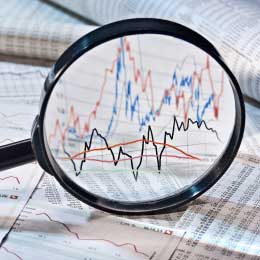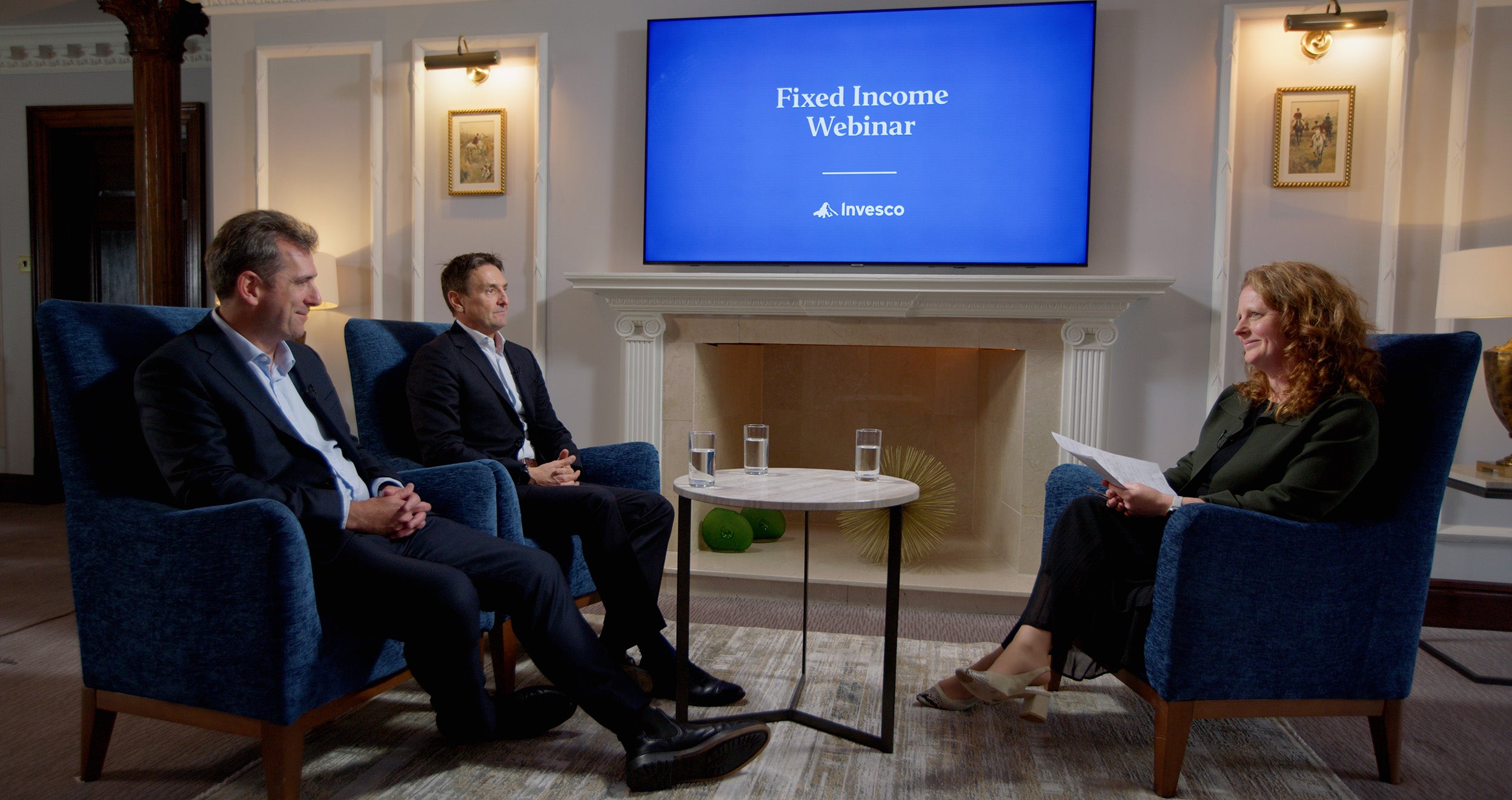
Mega Trends & Thematic Investing: explore the drivers of change
The world is changing faster than ever. Are you ready for the future? Explore the structural trends that are creating opportunities for our investment teams.
Environmental, Social and Governance (ESG) ETFs are growing rapidly, reaching $230 billion[1] in 2021 driven by investor demand and key regulatory developments. Most responsible investors see ESG as more than just avoidance but also driving positive change. At Invesco, we take an active approach to engagement and proxy voting – a commitment you can see with how we engage with ESG through passives.
We’re living in an age of disruption, where everything appears to change at lightning speed. Technology is transforming or lives and redefining entire industries. Meanwhile, climate change, declining birth rates, and an aging population are due to reshape society.
These are just some of the ‘megatrends’ at work in the world today with the power to reframe the way we live, what governments prioritize and how businesses operate and succeed.
We offer a broad set of ETFs that seek to capture the opportunities to be found in some of these disruptive themes.


Sign up to discover and receive relevant emails about ETF themes and asset classes.
Our ESG approach is centred around client needs. Most investors choose ESG ETFs for the same reasons they choose any other ETF: simplicity, low costs, transparency, tradability and often for the efficient way it tracks a reference index.

Focus on the key regulatory developments in the EU and at international level.

Passive (ETF) approach could provide materially positive outcomes for ESG investors.

Engage in an interactive discussion with a deeper dive into Practice.
This has been an area of increased focus, with some studies suggesting a positive relationship between a company’s financial and ESG performances. Moreover, some ESG indices have recently outperformed their parent (non-ESG) indices, which is partly due to the sector biases that occur naturally from exclusions, e.g. reduced weighting in energy, but could also be attributed to investors’ placing a “premium” on companies that are successfully managing ESG risks.
Whether or not ESG on its own can drive performance, investors can now find ETFs that have both ESG and financial objectives. You can choose between ESG ETFs that aim for similar returns as the parent index (with meaningful ESG improvement) or that have a greater tolerance for tracking error (with much more ESG improvement).
With environment one of the three ESG pillars, most ESG ETFs will include climate considerations either implicitly or explicitly in the index methodology. Some of our Invesco ESG ETFs go a step further by having specific climate-related goals, such as the Paris-aligned benchmark, reducing overall carbon intensity and/or increasing the amount of green revenues in the portfolio. We also offer thematic ETFs for focused exposure to climate solutions such as clean energy and solar power.
The simple answer is that any ETF that physically holds shares in a company can exercise its rights. All but one of our ESG ETFs replicate their indices by physically holding the shares. Our passive equity ETFs will vote in line with the largest active position held by Invesco, or with our ESG guidelines if no active position is held. Our global ESG team and investment managers engage with companies on key ESG issues, which includes many of those held by our passive ESG ETFs.
We’ve been helping investors incorporate their ESG objectives for the past 35 years and aim to include ESG considerations across all our investment strategies where possible. We believe engagement is one of the most effective mechanisms to reduce risks, maximise returns and have a positive impact on society and the environment. We are also committed to being a good corporate citizen and are signatories to key industry initiatives especially in the fight against climate change.
As ESG continues to grow globally, different regions have made efforts to introduce regulatory standards. Regulation will be a key factor in ensuring that efforts to integrate ESG have a tangible impact. It’ll also help to drive the standardisation of measuring and reporting.
The EU has introduced green taxonomy, Sustainable Finance Disclosure Regulation (SFDR) and most recently, the Sustainable Finance Strategy to provide rules and structure to the way businesses report on their ESG activities.
Greenwashing is when companies portray a public image of sustainability but aren’t taking sufficient or tangible action behind the scenes or undertake other questionable business activities. It could be a global drinks company committing to using 100% recycled plastic but setting no actual target, or a fast fashion brand using sustainable materials but with questionable manufacturing processes.
In the investment industry, it could be excluding obvious companies like tobacco manufacturers from a portfolio but not applying ESG analysis to the rest of it. Greater regulation and efforts to standardise measuring and reporting should help reduce the effects of greenwashing, as well as wider education.

Monthly gold update
Gold had a remarkable month, gaining 9.3% after breaking through US$3,000 and ending March at US$3,124. Economic and geopolitical uncertainty drove the gold price higher ahead of the trade tariffs scheduled to be announced on 2 April. Discover insights into the key macro events and what we think you should be keeping your eyes on in the near term.

Monthly fixed income ETF update
Bond markets struggled in March, primarily due to concerns about the potential impact of upcoming US policies. Read our latest thoughts on how fixed income markets fared during the month and what we think you should be looking out for in the near term.

Digital assets: Is the bitcoin bull run just getting started?
Five key factors suggest cryptocurrencies may continue their 2024 momentum and see positive performance in 2025.

India’s economic growth: Standing out globally
India is one of the strongest growing economies in Asia, driven by digital transformation, robust consumption and expanding exports. Find out more.

The future of fixed income investing; takeaways from our webinar
As we enter the final quarter of the year, our experts look back at the ‘year of the bond market’ and share their thoughts on the outlook for Fixed Income assets going forward.
The value of investments, and any income from them, will fluctuate. This may partly be the result of changes in exchange rates. Investors may not get back the full amount invested.
This marketing communication contains information that is for discussion purposes only.
Data as at 31 December 2021, unless otherwise stated.
By accepting this marketing communication, you consent to communicating with us in English, unless you inform us otherwise.
This marketing communication is not intended as a recommendation to buy or sell any particular asset class, security or strategy. Regulatory requirements that require impartiality of investment/investment strategy recommendations are therefore not applicable nor are any prohibitions to trade before publication.
Where individuals or the business have expressed opinions, they are based on current market conditions, they may differ from those of other investment professionals and are subject to change without notice.